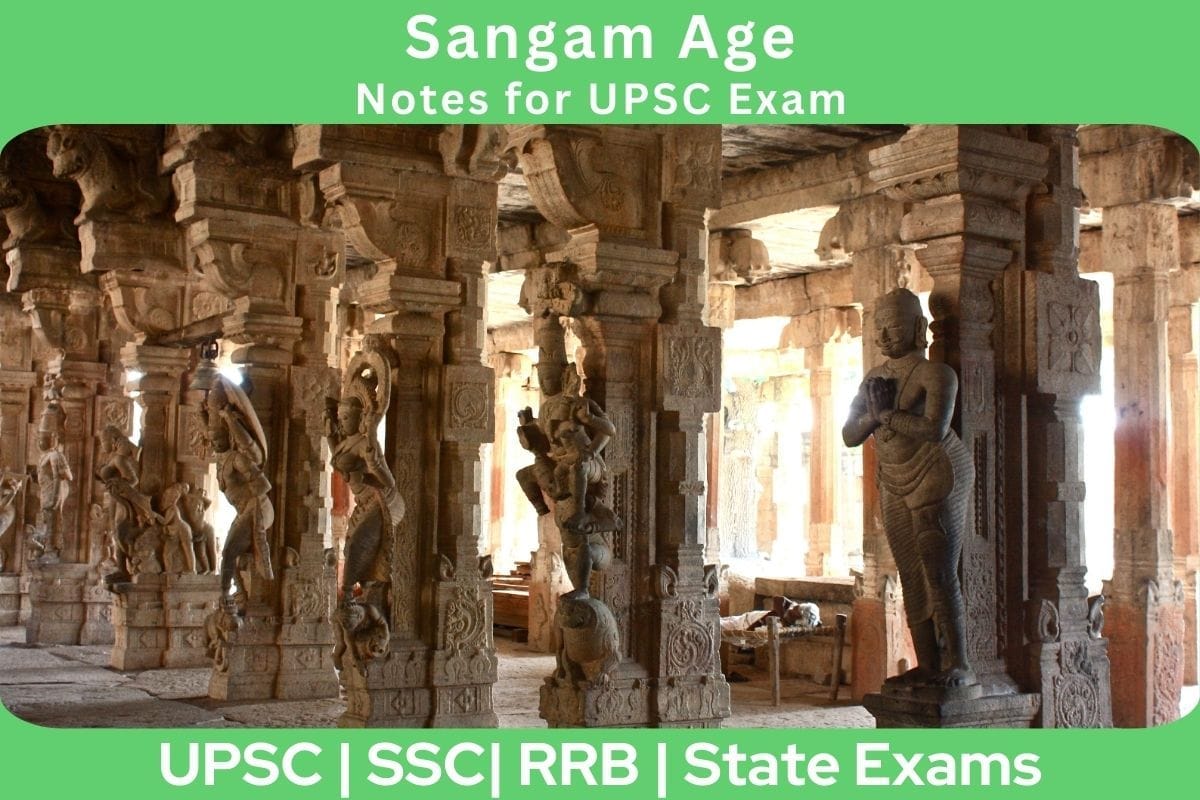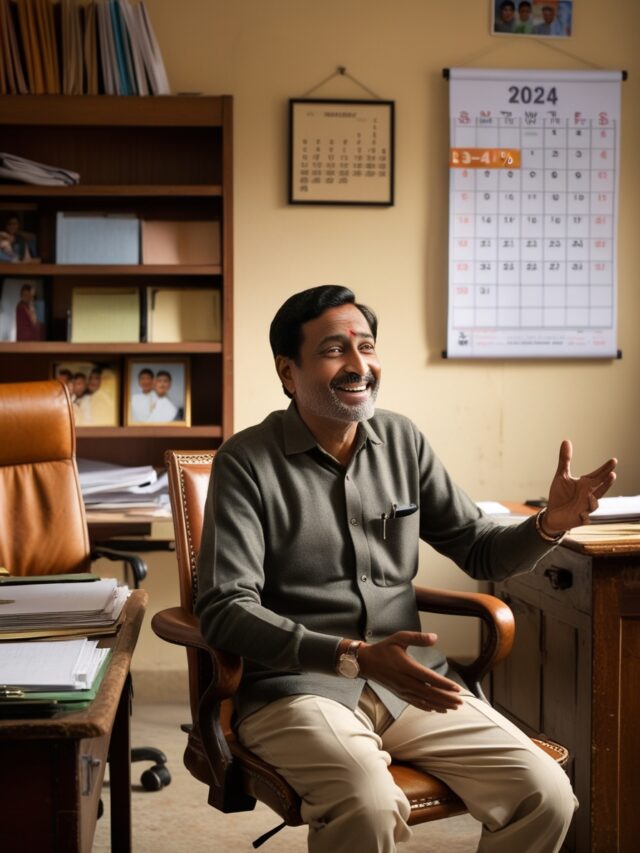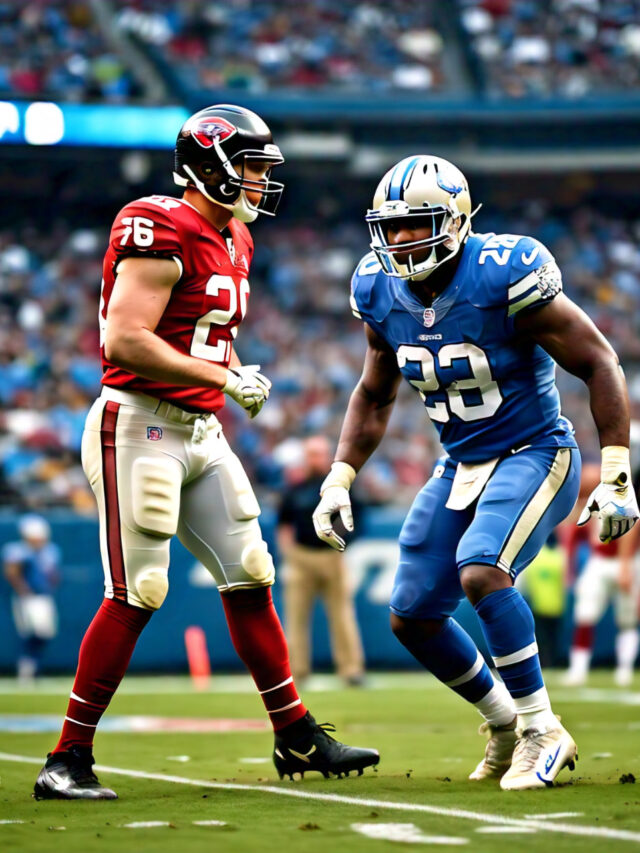
The Sangam age points to the time between 300 BCE to 200 CE in Tamil Nadu’s history. Back then, society was made up of lots of small kingdoms ruled by kings or chieftains. The main info we have about this time comes from Sangam age literature.
Polity in the Sangam Era
The Sangam literature gives us a peek into how things were run politically back then.
Kings and Kingdoms
- Back in the day, the big shots in politics were these small kingdoms ruled by kings.
- The Chera, Chola, and Pandya were the big players.
- The kings were like the top dogs, with all the power and even seen as somewhat divine.
- They took care of keeping things safe, settling arguments, and making sure justice was served.
- These kings were part of a group called Kshatriyas, basically the warrior class.
- These kingdoms came in all sizes.
- The Cheras, Cholas, and Pandyas were the big bosses, running most of Tamil Nadu.
- And then, there were the smaller kingdoms, kind of like sidekicks, ruled by kings who answered to the big bosses.
- All these kingdoms were pretty much always in a state of war with each other.
Ministers and Officials
- The king had a bunch of advisors and helpers in his team.
- There was the main advisor, the treasurer, and the head of the army, the Senapati. The king picked these folks and made sure they did their jobs well.
- They gave advice, kept things in order, and made sure everything ran smoothly.
Assembly and People Participation
- The kings got advice from a group called the ‘sabha,’ made up of advisors, officials, and older folks.
- They discussed important issues.
- The regular folks also got a say in things, especially in picking kings and village leaders.
- But there was a catch – only people from the upper classes could join in these talks.
Social Classes
- In the Sangam times, society was split into different groups – Brahmins, Kshatriyas, Vaishyas, and Shudras.
- The Brahmins and the priests were at the top.
- Next up were the Kshatriyas, the warriors and kings.
- Then came the Vaishyas, doing farming, trading, and crafting, while the Shudras handled the less fancy jobs.
- At the bottom were the slaves.
- These divisions decided what people did and where they stood in society.
Land and Taxes
- Most folks were into farming during the Sangam era, and the land was where the money was at.
- The king owned most of it and shared it with his pals, who paid him taxes.
- There were all sorts of taxes – a cut of the crops, taxes on businesses, and extra fees.
- The taxes mainly went to fund the king’s hangouts and the army.
Army And Battles
- Kings kept a tough army to keep their turf safe and maybe grab some more.
- The army had foot soldiers, horse riders, chariots, and even elephants.
- Wars back then used basic weapons like swords, shields, spears, bows, and arrows.
- The Sangam stories talk a lot about wars between the Cheras, Cholas, and Pandyas.
- They had all kinds of tricks – spying, sneaky attacks, and pretending. The brave warriors and leaders got big shoutouts and rewards from the king.
In a nutshell, the government in the Sangam days was a bunch of small kingdoms with super powerful rulers. The king was the big boss, but he got tips from advisors and group meetings. Land was a big deal, and taxes kept everything running. A solid army was there for defense and offense.
Economy in the Sangam Times
The Sangam age, happening from 300 BCE to 200 CE in Tamil Nadu, had a pretty simple economy.
Farming
- Most of the action was in farming.
- People grew rice using water from rivers, lakes, and ponds.
- There were also other crops like pulses, groundnuts, sugarcane, and coconuts.
- They used basic tools like ploughs, spades, and sickles.
- Bulls helped with ploughing, and farmers stuck to the old-school farming ways.
- The king, big landlords, and villages owned the land, and farmers paid them taxes.
Trade
- Trading was a big deal too.
- People exchanged goods within Tamil Nadu and also with other parts of India and different countries.
- Sea trade, done through places like Kaveripattinam, was key.
- They brought in gold, silver, pearls, spices, and more from far-off lands.
- Traders had groups called ‘nannul’ to look out for each other.
- Different jobs like weaving, dyeing, and metal crafting helped the trade, and traders had to pay taxes to the king.
Economy
- For money, they used gold coins called ‘kanjis,’ silver coins called ‘pana,’ and even cowry shells for small deals.
- Traders doubled as bankers, taking in deposits and lending money with some interest.
Dealing With Other Countries
- Tamil traders were pretty chatty with places like Rome, Greece, Egypt, and Southeast Asia.
- They traded spices, cotton clothes, gems, and pearls for cool stuff like glassware, cosmetics, and ivory.
- Ports like Kaveripattinam, Arikamedu, and Puhar were the hotspots for foreign trade.
- They even found Roman coins in these places, showing how well they were connected.
Other Economic Activity
- Besides farming and trading, folks had jobs like weaving, metal crafting, and pottery. Skilled workers stuck to family trades.
- Making cotton clothes on handlooms was a big deal. They stored food and traded goods in big storage places.
- Rich merchants and traders were the big shots in the money game.
Taxation and State Revenue
- Most of the cash for the government came from taxes, and they also got some from subordinate kings.
- They had all sorts of taxes based on owning land, doing trades, and having a job.
- The money gathering was done by the treasurer and their team. The taxes went to fund the king’s fancy lifestyle and the army.
In a nutshell, the economy in the Sangam times was mainly about farming, with trade and business kicking in too, thanks to ports and deals with other countries. Jobs like weaving and metal crafting kept things going. The king got money from land and taxes. While this system gave jobs to different folks, having all the power in the king’s hands and some unfair taxes could hurt the regular people.
Society in the Sangam Era
The Sangam time, from 300 B.C. to 200 A.D., was the golden age for the Tamil language. It was a period of big growth in Tamil history.
Social Setup
Sangam folks were divided into four main groups – Brahmins, Kshatriyas, Vaishyas, and Shudras. The top dogs were the Brahmins, who were the smart ones and priests.
Next up were the Kshatriyas, the warriors and kings, basically the rulers. The Vaishyas were most people – farmers, traders, and artisans. The Shudras did the simple jobs, and at the bottom were the slaves with no status.
There was also a system based on jobs that influenced who had more rights and power.
Clans
- Sangam society also had groups called ‘kudi’ or clans.
- Big ones were Velir, Karaiyar, and Agamudaiyar. If you were in the same clan, you had a shared identity and history.
- Clan heads were pretty important.
Families
- Families were usually big and included grandparents, parents, kids, and more.
- Most folks stuck to having one spouse, but the rich could have more.
Women’s Status
- In Sangam literature, women were shown as pretty important, but things were different in real life.
- They could own stuff and inherit, but they still depended a lot on the guys for safety and money.
- Girls got educated mainly for being wives and moms.
Agriculture
- Most people were farmers, growing rice mostly.
- Trade and business were big too, thanks to sea ports.
- People also did traditional jobs like weaving, pottery, and metal crafting. Some did woodwork, bead making, and mat weaving.
- Brahmins did smart jobs like being priests, scholars, and teachers.
- Kshatriyas were the warriors and rulers. Some made a living from raising livestock and fishing.
Culture and Values
- Sangam literature showed off the cool culture and values of Tamils back then.
- Religion and spirituality were a big deal, with people worshipping nature gods.
- Being honest, generous, and doing charity were seen as important.
- They loved arts and crafts like music, dance, poetry, and embroidery. Respecting elders, teachers, and guests was a big deal.
Entertainment
- People had a blast with all kinds of fun stuff. Listening to poets tell stories was a hit.
- They went on outings, boating, and loved festivals.
- Games like chess and dice were big. Entertainment troupes did dance, drama, and music for the kings.
Social Issues
- But it wasn’t all perfect.
- The caste system caused problems and unfairness, especially for the lower castes.
- Slavery was there but not as much as later on.
- Women had it tough with less education, work rights, and inheritance.
- Some folks were poor, especially those without land and small farmers.







